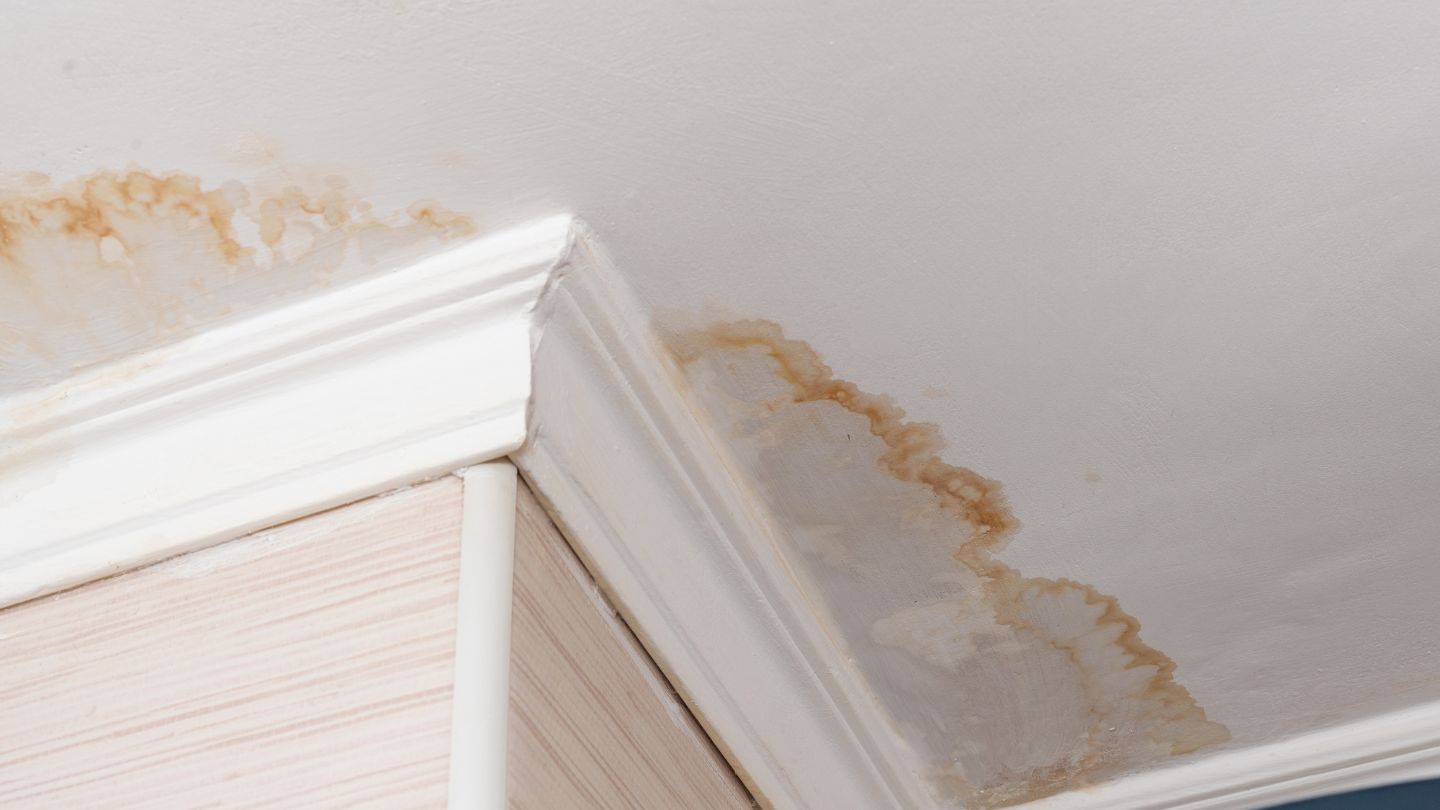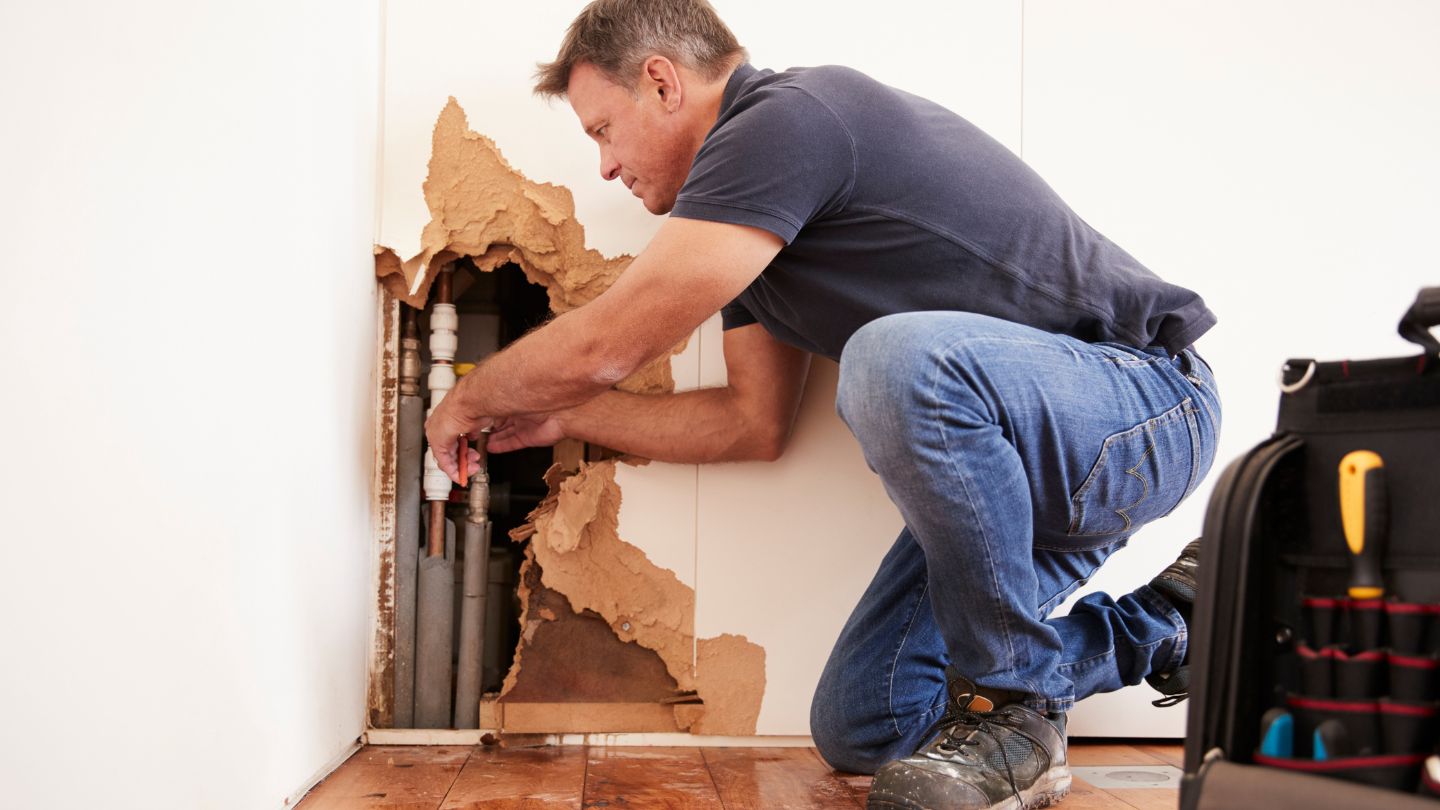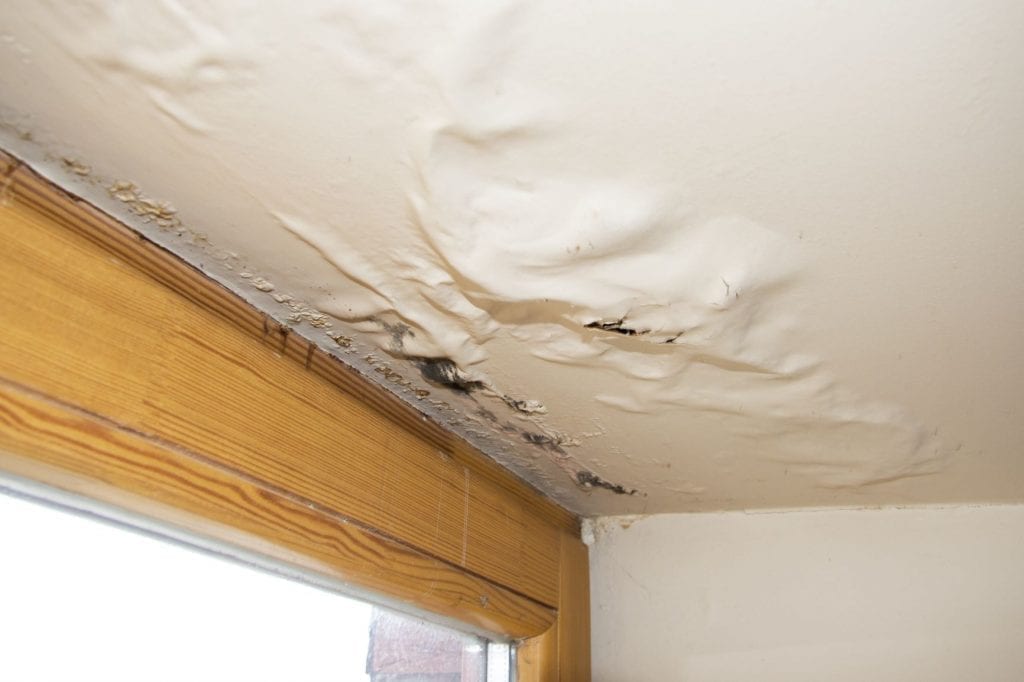Water leaks, a common yet often underestimated problem in homes, can lead to significant flooring and wall water damage, costly repairs, and even health hazards if not addressed properly. This comprehensive guide delves into the mechanisms of water damage, the myriad of ways it can manifest in your home, and effective strategies to prevent, mitigate, and repair the damage.
The Process of Water Damage and Leaks
Water interacts with building materials in a complex manner, gradually breaking down the integrity of these materials and compromising the structure of your home. Here’s a closer look at the process:
- Absorption: Many building materials, like wood and drywall, are porous and absorb water. This absorption can cause swelling, warping, and breakdown of the material over time.
- Spread: Water can spread beyond the initial leak area, wicking up walls or seeping down to lower levels, affecting more extensive areas than initially apparent.
- Secondary Damage: Prolonged water exposure can lead to secondary damage such as mold growth, rusting of metal fixtures, and deterioration of electrical wiring.

Early Signs of Water Damage to Walls and Floors
Early detection of water damage is critical. Here’s what to look out for in more detail:
- Discoloration and Stains: Water stains might appear as well-defined or diffuse patches with varying colors and shapes, often indicating the nature and source of the leak.
- Warping or Buckling: Floorboards may start to lift or separate, and hardwood floors might show gaps between planks. Similarly, walls can exhibit warping or bulging.
- Peeling or Bubbling Paint: As moisture seeps through walls, paint or wallpaper may lose adhesion, leading to aesthetic and structural issues.
- Mold and Mildew: Mold can appear in various colors and patterns, accompanied by a distinct musty odor. It’s a clear sign that moisture levels are high and need addressing.
Understanding the Extent of the Water Damage
Assessing the extent of water damage requires a keen understanding of the materials affected and the duration and source of water exposure:
- Type of Water: Clean water (such as from a broken pipe) is less damaging than contaminated water (like sewage backups or floodwater). The latter can introduce toxins and pathogens, requiring more extensive cleanup.
- Duration of Exposure: The longer materials are exposed to water, the more severe the damage. Quick response is crucial in minimizing the extent of damage.
- Hidden Damage: Water often causes hidden damage within walls, under floors, or in crawl spaces. This unseen damage can be more challenging to detect and repair but is critical to address.
Mitigating and Repairing Water Damage From Leaks
A comprehensive approach to mitigation and repair involves several steps:
- Immediate Response: As soon as a leak is detected, take immediate steps to stop the flow of water. This might involve shutting off the main water supply or quickly repairing the broken element.
- Water Removal: Thoroughly remove all standing water using pumps, vacuums, or other methods. The faster this is done, the less chance there is for the water to cause further damage.
- Drying and Dehumidifying: Employ professional-grade dehumidifiers, air movers, and other equipment to remove moisture from the air and materials. Monitor the moisture levels to ensure that the area is thoroughly dried.
- Cleaning and Sanitizing: Water can leave behind contaminants, so it’s crucial to clean all affected areas with appropriate agents. Sanitize to kill any bacteria or mold spores that might have begun to grow.
- Restoration: Evaluate the damage and replace any irreparably damaged materials such as swollen drywall, warped floorboards, or mold-infested carpets. Consider upgrades or improvements to materials to make them more resistant to future water damage.
Preventing Future Leaking Water Damage
Proactive prevention is key to avoiding the recurrence of water damage:
- Regular Home Inspections: Conduct detailed inspections of all potential water sources, including plumbing, appliances, roofing, and windows. Look for early signs of wear and tear or potential weak points.
- Maintenance of Plumbing and Roofing: Ensure that all plumbing is in good working order and that roofs are free from damage or degradation. Regularly clean out gutters and downspouts to prevent water accumulation.
- Landscaping and Exterior Maintenance: Proper landscaping can direct water away from your home’s foundation. Ensure that the grading of your property directs water away from the house and that sidewalks or driveways do not direct water toward the building.
Professional Assessment and Water Restoration
Water damage, particularly when it involves structural components or is widespread, often requires professional assessment and restoration. Here’s why professional help is critical:
- Expertise: Professionals have the training and tools to accurately assess and address water damage, including identifying hidden moisture and mold risks.
- Equipment: Restoration companies use industrial-grade equipment for water removal, drying, and dehumidifying, ensuring a thorough and effective process.
- Safety: Handling water-damaged materials, especially when contamination is involved, can pose health risks. Professionals know how to safely handle these materials and dispose of them properly.

How Do You Fix Water-Damaged Walls?
Repairing water-damaged walls requires a multi-step process:
- Identify and Stop the Water Source: Ensure the cause of the water damage is addressed before starting repairs to prevent further damage.
- Assessment: Evaluate the extent of the damage. For plaster and drywall, determine if drying out is sufficient or if sections need replacement.
- Removal: Cut out and remove any compromised material that cannot be salvaged.
- Drying: Thoroughly dry the affected area with fans and dehumidifiers to prevent mold growth.
- Cleaning and Disinfecting: Clean the area with antimicrobial agents to prevent mold and mildew.
- Repair: Repair or replace the damaged sections of the wall. This may include patching with new drywall, plastering, and repainting.
- Finishing Touches: Reapply paint or wallpaper to match the existing wall.
What to Do if Water Leaks Through Wall?
When you discover a leak through the wall:
- Contain the Leak: If possible, catch the water with a bucket or other container to minimize further damage.
- Stop the Water Source: Turn off the main water supply if necessary.
- Call a Professional: United Water Restoration Group can respond to emergencies within an hour and provide immediate assistance to help resolve the issue.
- Dry the Area: Remove any wet items and use fans and dehumidifiers to start drying the area immediately.
- Inspect for Damage: Check for any signs of structural damage or mold growth.
- Repair the Damage: Depending on the severity, this could involve simple patching or complete replacement of the affected wall sections.
What Happens if Water Gets on Your Walls?
If water gets on your walls, it can lead to:
- Cosmetic Damage: Staining, peeling paint or wallpaper, and discoloration.
- Structural Issues: Prolonged exposure to water can soften and weaken the structural integrity of the wall materials.
- Mold and Mildew Growth: Moisture can create a breeding ground for mold and mildew, which can spread and lead to health issues.
Will Water in a Wall Dry Out?
Water within a wall can sometimes dry out on its own if the quantity is small and the area is well-ventilated. However, relying on natural evaporation is risky because:
- Mold Development: Even a small amount of lingering moisture can lead to mold growth.
- Structural Damage: The water can cause long-term damage to the structural elements of the wall.
It is typically recommended to actively dry the affected area using dehumidifiers and fans and to have the wall checked by a professional to ensure complete drying and to assess for potential wall water damage.
Contact UWRG for Water Damage Caused by Leaks
Water leaks, if left unaddressed, can lead to costly flooring damage, wall water damage, and the overall structure of your home. Understanding the signs and processes of water damage, taking prompt and effective action, and engaging in regular preventive measures are all crucial steps in protecting your home.
For those facing significant water damage or seeking to ensure a thorough and professional restoration, United Water Restoration Group offers the expertise and services needed to restore your home effectively and safely.





